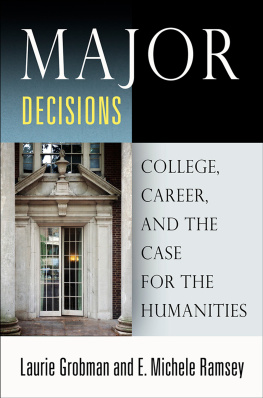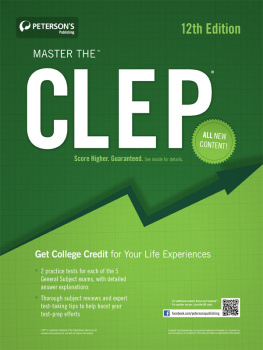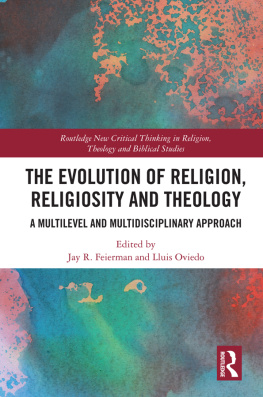Cover design: Wiley
Copyright 2018 by Thomas McMakin and Wade D. Fletcher, Jr. All rights reserved.
Published by John Wiley & Sons, Inc., Hoboken, New Jersey.
Published simultaneously in Canada.
No part of this publication may be reproduced, stored in a retrieval system, or transmitted in any form or by any means, electronic, mechanical, photocopying, recording, scanning, or otherwise, except as permitted under Section 107 or 108 of the 1976 United States Copyright Act, without either the prior written permission of the Publisher, or authorization through payment of the appropriate per-copy fee to the Copyright Clearance Center, Inc., 222 Rosewood Drive, Danvers, MA 01923, (978) 7508400, fax (978) 6468600, or on the Web at www.copyright.com. Requests to the Publisher for permission should be addressed to the Permissions Department, John Wiley & Sons, Inc., 111 River Street, Hoboken, NJ 07030, (201) 7486011, fax (201) 7486008, or online at www.wiley.com/go/permissions.
Limit of Liability/Disclaimer of Warranty: While the publisher and author have used their best efforts in preparing this book, they make no representations or warranties with respect to the accuracy or completeness of the contents of this book and specifically disclaim any implied warranties of merchantability or fitness for a particular purpose. No warranty may be created or extended by sales representatives or written sales materials. The advice and strategies contained herein may not be suitable for your situation. You should consult with a professional where appropriate. Neither the publisher nor author shall be liable for any loss of profit or any other commercial damages, including but not limited to special, incidental, consequential, or other damages.
For general information on our other products and services or for technical support, please contact our Customer Care Department within the United States at (800) 7622974, outside the United States at (317) 5723993, or fax (317) 5724002.
Wiley publishes in a variety of print and electronic formats and by print-on-demand. Some material included with standard print versions of this book may not be included in e-books or in print-on-demand. If this book refers to media such as a CD or DVD that is not included in the version you purchased, you may download this material at http://booksupport.wiley.com. For more information about Wiley products, visit www.wiley.com.
Library of Congress Cataloging-in-Publication Data:
Names: McMakin, Tom, author. | Fletcher, Doug, author.Title: How clients buy : a practical guide to business development for consulting and professional services / by Tom McMakin, Doug Fletcher.Description: Hoboken, New Jersey : John Wiley & Sons, Inc., [2018] | Includes bibliographical references and index. | Identifiers: LCCN 2017057356 (print) | LCCN 2017058946 (ebook) | ISBN 9781119434726 (pdf) | ISBN 9781119434757 (epub) | ISBN 9781119434702 (cloth)Subjects: LCSH: Consultants--Marketing. | Professions--Marketing. | Customer relations.Classification: LCC HD69.C6 (ebook) | LCC HD69.C6 M3975 2018 (print) | DDC 001--dc23LC record available at https://lccn.loc.gov/2017057356
Tom dedicates this book to Harry Wallace and the crew at PIE for their fellowship and inspiration.
Doug dedicates this book to his parents, Wade and Mary Lutie, for introducing him to the world of books.
The Problem
Chapter 1
A Curious Problem
Was that you we saw last Friday night at the Seattle airport?
We would've said Hi, but you were on the phone.
We were the guys in blue blazers dragging our roller boards over to Ivar's for a plate of oysters and a Pyramid IPA. You might have seen us pounding out thank-you notes on our phones before the late flight home.
Allow us to introduce ourselves.
Doug leads a business development consulting firm and sits on the board of a midsized consulting firm. Before that, he cofounded a technology-enabled consulting firm that specialized in global web survey projects. He got his start as a management consultant at A. T. Kearney, and before that was trained on GE's leadership development program.
Tom also runs a consulting firm that helps the biggest names in professional services grow their businessesa kind of consultant to consultants. He was in private equity before that, and in his first big gig served as the chief operating officer of Great Harvest Bread Co.
This is all to say we've spent two lifetimes offering clients consulting and professional services. We've scoped projects, delivered outcomes, wined and dined clients, written white papers, presented at conferences, and relentlessly followed up.
The proof? When people ask our kids what we do, the kids don't know.
They travel a lot, they say.
We've written this book to describe how clients buy consulting and professional services because we think if more people in our industry could get smarter about how expertise meets the opportunity to help, the world would be a better place. We look around and see lots of thorny problems that need solving. We also see lots of smart people ready to help. The challenge facing them both is to connect with each other more efficiently.
Maybe you're an accountant, a lawyer, or an Internet security specialist. Maybe you consult on strategy, human resources, finance, marketing, operations, or procurement. Or you're a freelance designer or marketing expert. You might be part of a large organization, working for the big consultant Bain, the consulting and accounting firm KPMG, or the human resources specialist AON. You might work out of a handsome glass and steel tower in downtown Boston or Chicago. Or you might be just starting out or recently retired, offering procurement, organizational or training advice, working out of your newly converted guest bedroom.
Either way, this book is for you.
Rainmaking
As a consultant or a person working in professional services, all of us know we have to become rainmakersthe people at the top who bring client business into their firms. In most large firms, you have to be successful bringing in new business to be considered for promotion to partner. And, if you're a founder or cofounder in a small to midsized firm, you live and die by the work you bring in to feed your troops.
It's the harsh imperative of consulting and professional services: being smart about something is not enough. You have to know how to engage with potential clients, understand their unique challenges, and scope business. You have to figure out a way to build a bridge from your expertise to those it can most help. You have to make it rain, or you will die in the desert of commerce.
The problem is that selling consulting and professional services is hard. Some would say really, really hard.
It's hard because selling consulting and professional services is different from selling shoes. The former is sold on relationships, referrals, and reputation, while the latter is sold on attributes like size, weight, color, style, and performance. It's the difference between an intangible and tangible sale.
Further, despite the importance of becoming an effective rainmaker, we're never taught how to sell the work we do. We're trained as lawyers, accountants, web developers, financial analysts, engineers, or architects, how to do the work, but not in how to bring in new clients.
Then, there's the inconvenient fact that in our line of work, sales is a dirty word. While researching for this book, we interviewed dozens of rainmaking pros and were struck by how many of them said, Never say sell. In fact, they reported that they don't even think about selling. To them, it's counterproductive. Dominic Barton, Global Managing Partner of McKinsey & Co., one of the world's premier strategy consulting firms, put it this way: If I mentioned sales in our firm, I'd be hauled up in front of our professional ethics board. It's just not the way we think.
Next page








